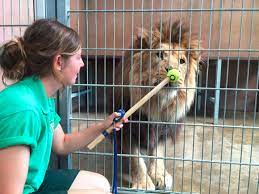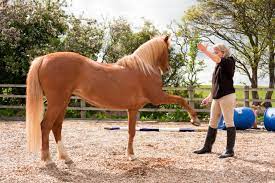What is clicker training?
Clicker training is a positive reinforcement technique used to train animals. It involves the use of a small device called a clicker that produces a distinct clicking sound when pressed. The idea is to associate the sound of the clicker with a reward, usually a treat. When the animal performs a desired behavior, such as sitting or performing a trick, the trainer clicks the clicker and immediately gives the animal a treat. This reinforces the behavior and increases the likelihood that the animal will repeat it in the future. Clicker training can be used to train a variety of animals, including dogs, cats, horses, and even dolphins.
What are the advantages of clicker training?

One of the main advantages of clicker training is that it is a gentle and humane way to train animals. Unlike traditional training methods that rely on punishment and negative reinforcement, clicker training focuses on rewarding positive behavior. This makes it a more enjoyable experience for the animal, which is more likely to result in long-term behavioral changes. Clicker training can also be used to teach complex behaviors, such as agility training or obedience training. The clicker is a precise and consistent way to communicate with your animal, which can make training more efficient and effective.
In this blog post, we will discuss the benefits of using clicker training and provide a step-by-step guide to introducing your horse to clicker training.
Benefits of Clicker Training
Clicker training has numerous benefits for both horses and their handlers. These benefits include:
- Increased communication: Clicker training allows for clear communication between horse and handler. The clicker serves as a marker to signal to the horse that they have done something correctly, making it easier for the horse to understand what is desired of them.
- Positive reinforcement: Clicker training relies on positive reinforcement, which means that desired behaviors are rewarded with treats. This positive reinforcement encourages horses to continue performing desired behaviors, making training more effective and efficient.
- Reduced stress: Since clicker training does not rely on punishment or negative reinforcement, it can reduce stress for both horse and handler. This is because the horse knows that they will only receive positive feedback and will not be punished for incorrect behavior.
- Improved relationship: Clicker training can help build trust between horse and handler. Since the horse is only receiving positive feedback, they are likely to become more confident and comfortable around their handler, leading to an improved relationship.
How to Introduce Clicker Training to Your Horse
Step 1: Gather supplies
Before starting be sure to gather all necessary supplies. These include a clicker, treats, a target stick, and a halter or bridle.

Step 2: Get your horse accustomed to the clicker
Introduce the clicker to your horse by clicking and treating them at the same time. Do this several times in a row to establish a positive association between the clicker sound and the treat.
Step 3: Teach your horse to target
Use the target stick to teach your horse to touch a specific spot, such as their nose, to the stick. Click and treat every time your horse touches the target stick. This teaches your horse to associate the ‘click’ sound with reward.

Step 4: Teach desired behaviors
Once your horse understands the clicker and target stick, you can begin using them to teach desired behaviors. For example, if you want your horse to stand still while mounting, click and treat when they stand still. Alternatively, if you want your horse to back up, click and treat when they take a step back.

Step 5: Practice, practice, practice
Like any training method, clicker training takes practice. Be patient with your horse and continue practicing until they fully understand the desired behaviors.
Scientific Evidence
Studies have shown that clicker training can have numerous positive impacts on horse behavior. A study conducted by the University of Sydney found that clicker training led to decreased anxious and aggressive behaviors in horses. Another study conducted by the University of Guelph found that clicker training improved learning and retention in horses.
Clicker training can be a highly effective and enjoyable training method for horses. By following the steps outlined above and practicing patience and consistency, you can effectively introduce your horse to clicker training and reap the benefits of this positive reinforcement technique. Understanding the benefits of clicker training and following a step-by-step guide can improve the relationship between horse and handler, reduce stress, and improve overall behavior.
Want to learn more about clicker training? head over to Progressive Equine Partnerships member Hoppologics youtube channel for lots of free video or visit their website to learn more and join the clicker accadmy.



